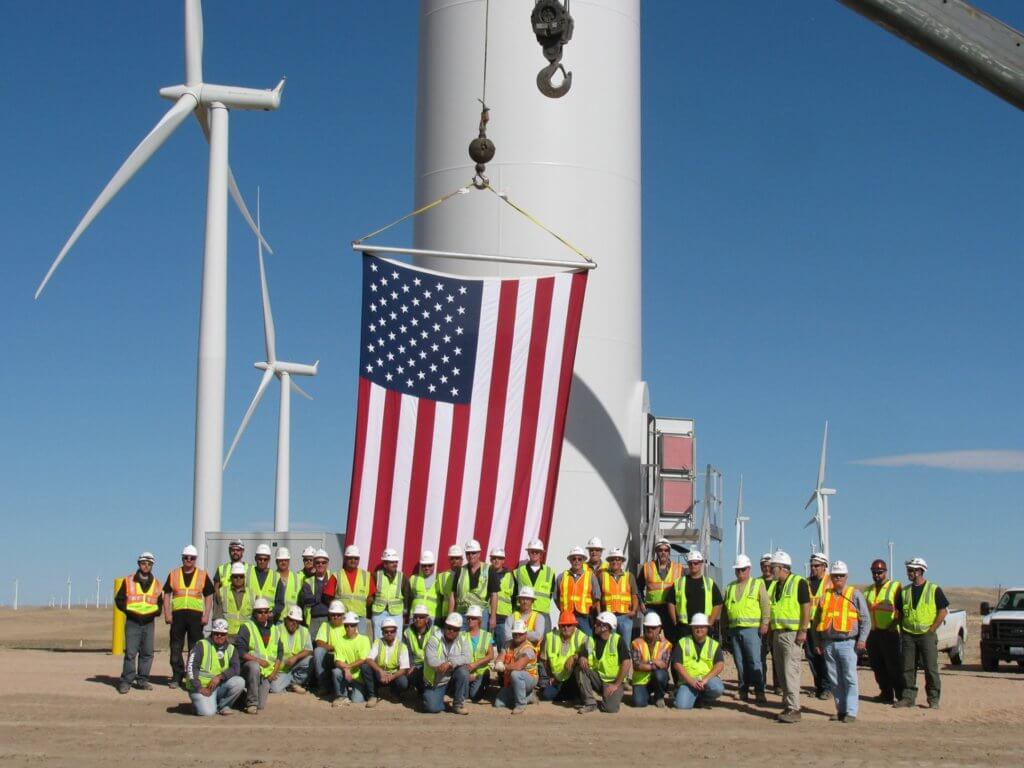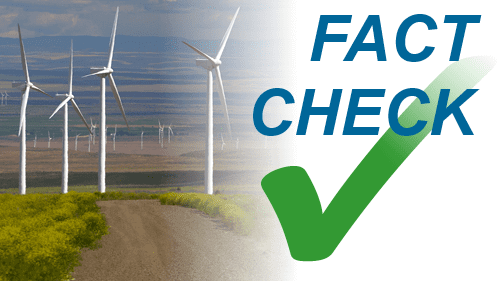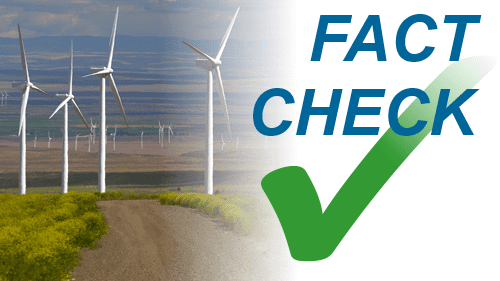Wind power good for America: Answering a question that’s already been answered
Attempting to fact check an opponent when the facts are not on your side is a difficult endeavor. The fossil fuel industry-funded Institute for Energy Research found that out recently when it rushed out an embarrassing attempt at a fact check that not only failed to find a single thing that was incorrect in AWEA’s statements, but also made its own factually incorrect attacks on wind energy.
Time and time again, wind power has proven to be good for American consumers. Multiple studies have shown adding wind energy reduces electricity prices, helps reduce the impact of future fuel price shocks, and makes the energy market more competitive.
However, in light of Tuesday’s U.S. House Subcommittees on Energy and Oversight hearing, the fossil-funded Institute for Energy Research (IER) is still looking to spread myths about wind power.
While the Canada Free Press and Yahoo! News’ Susan Graybeal choose to repost IER.’s myths word-for-word in their reporting, we provide the whole truth about wind power in our blog post, “Koch-funded Institute for Energy Research fails on facts.”
Additionally, the Natural Resources Defense Council (NRDC) points out in its own fact check that “[a] fair evaluation of our federal energy incentives requires a broad comparison, with historic context, and in this context, wind incentives are just leveling the playing field. Comparisons and contexts can be found in both government reports and reliable independent sources.”
Along with NRDC’s information, it’s important to remind truth-seekers that:
· A single incentive, the Production Tax Credit, is by far the dominant policy driver for wind energy in the United States. The PTC ensures the predictability and stability that any industry needs to attract new investors.
· American taxpayers have paid over $500 billion to fossil-fuel industries through incentives that in many cases are permanent, making them more valuable to investors.
· Since 1950, 70% of all energy incentives have gone to competing energy industries. As recently as 2002-2007, those industries received nearly five times as much in tax incentives as renewable energy sources.
· Wind saves consumers money. According to a May 2012 Synapse Energy Economics, Inc., report, adding more wind power in the Midwest would lower overall energy costs for consumers, saving the average household $63 to $200 per year.
· Wind power drives up to $25 billion of private investments annually into our state and national economies.
· Wind power supports American jobs. The wind industry now supports 80,000 jobs nation-wide, with nearly 500 American manufacturing plants in 44 states.
When looking at the facts about energy and the history of government incentives, wind power has offered the best deal for Americans in its return on investment.
To see AWEA Interim CEO Rob Gramlich’s prepared testimony in full, click here.



